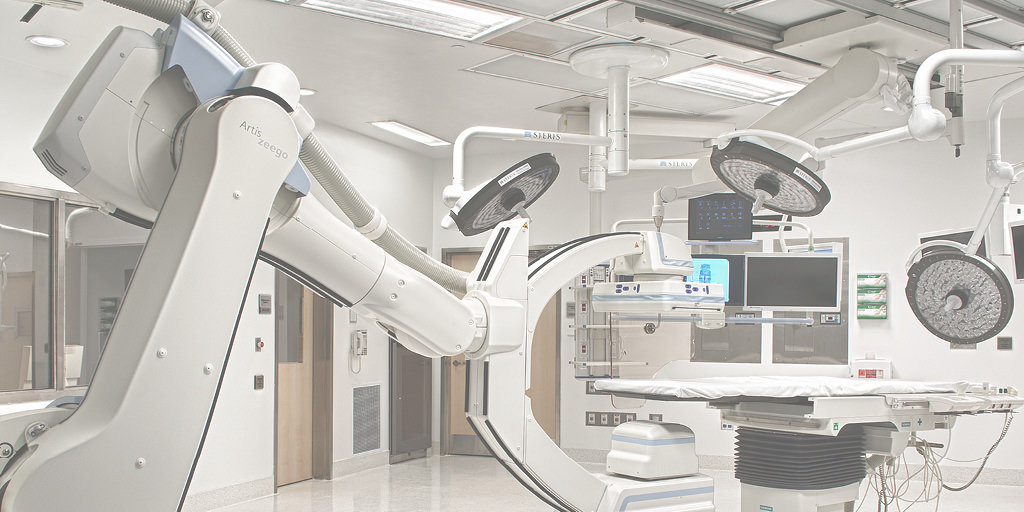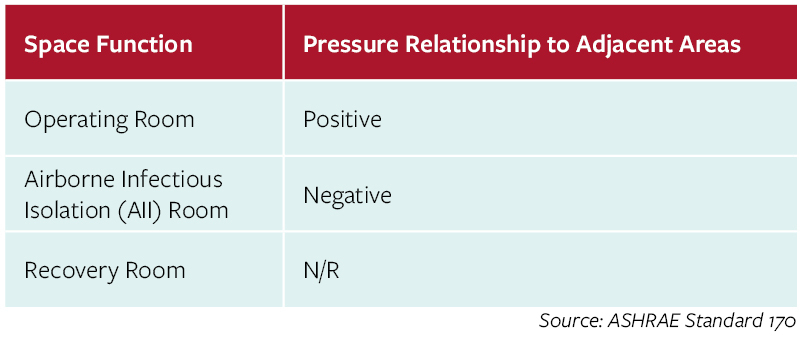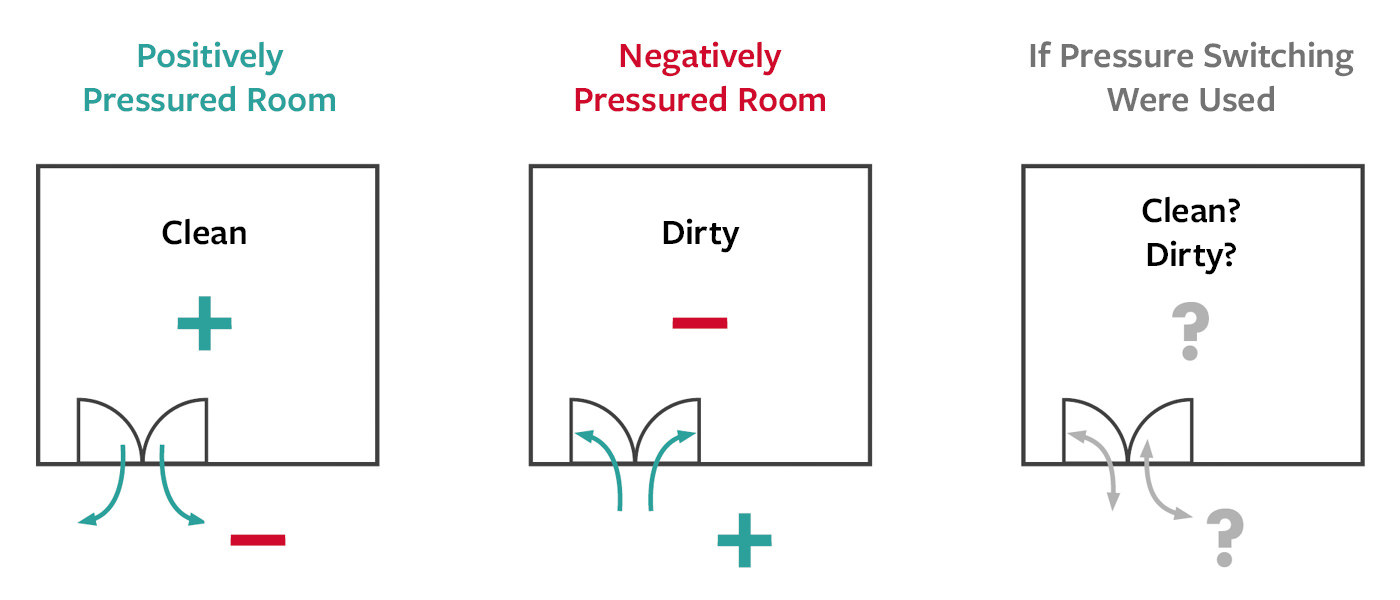What About “No Requirement” and Pressure Switching? Two More Notes on ASHRAE Standard 170
Jan 26, 2016

In our healthcare engineering work, we often run into a pair of questions about ASHRAE Standard 170 and air pressure relationships:
- What does the standard mean by “No Requirement”?
- Can I have a room that switches between positive and negative air pressure?
The answers matter for facility operations and planning, as well as for patient well-being.
What does “No Requirement” mean?
In Standard 170, “N/R” has replaced the “ – ” pressure requirement for some spaces.The dash mark had been misapplied by some regulators as a neutral pressure requirement.
(By way of background: “N/R” appears in the 2008 version of ASHRAE Standard 170, which is referenced by the 2010 FGI Guidelines for Design and Construction of Hospitals and Outpatient Facilities. The previous [2006] FGI Guidelines used the dash mark and provided its own ventilation standards. 2010 is the first year that the Guidelines references ASHRAE Standard 170. The 2014 Guidelines follows the same “N/R” terminology.)
“N/R” indicates that there’s no air pressure requirement one way or another. A room’s air pressure can be positive, negative, or neutral in relationship to adjacent areas. Here are three examples from Table 7.1:

“N/R” can benefit healthcare facilities, giving them the flexibility to house multiple functions in the same space.
Endoscopy suites, for example, used to require positive pressure, so that function could only be paired with other space functions requiring positive pressure. An Addendum to the 2008 version of Standard 170 changed the pressure relationship to “N/R.” As a result, that space function can be doubled up with a greater number of space functions.
Can I have a room that switches between positive and negative air pressure?
Because of how a previous version of Standard 170 was written, some interpreted it as ambiguous in regards to whether switching a room between positive and negative pressure was permitted.
Now ASHRAE has eliminated any ambiguity, by moving the prohibition against pressure switching out of a footnote and into the body of the standard: “Controls intended to switch the required pressure relationships between spaces from positive to negative, and vice versa, shall not be permitted.” The update was introduced in Addendum E of Standard 170-2013 (available on ASHRAE.com as a free PDF download).
From a patient safety standpoint, at issue is keeping a positively-pressured room clean. For the purposes of infection control, a positively-pressured room is clean, while a negatively-pressured room is dirty.
From a practical standpoint, if all you have is a switch on the wall, the question arises: How do you “clean,” or decontaminate, a negatively-pressured room when switching it to positive pressure? What will ensure that the positively-pressured room is now clean?

From a compliance standpoint, even having those switches on the wall could be an issue, raising a flag for surveyors.
As an example, with economics and typical patient volume in mind, a hospital may want to maximize their space use by sharing multiple functions in one room. Case in point: I encountered a situation where a healthcare provider wanted to combine a bronchoscopy room with an operating room. They don’t use the bronchoscopy room at a high enough rate to need independent spaces for both. Why not save money and space by combining the functions into one room?
The answer is found in ASHRAE 170.
Because pressure switching is not allowed, bronchoscopy can only be paired with spaces having a negative or N/R pressure requirement. So bronchoscopy can be paired with endoscopy (which is N/R), but not an operating room (which is positive).
Updated 7/2016 to clarify which version of Standard 170 has the addendum clarifying pressure switching requirements.